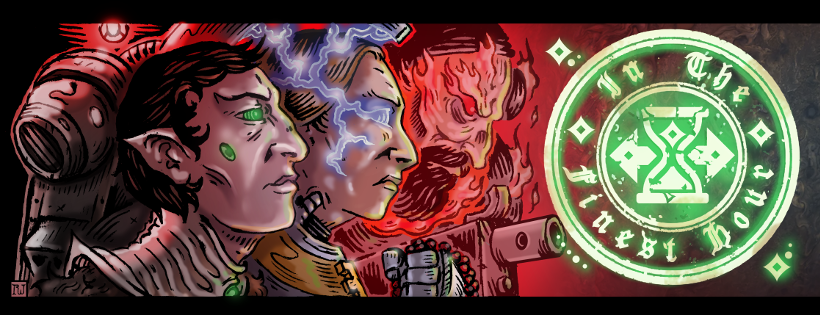The simplest stratagem in the game, and arguably the most important as well. This time around, we dedicate an entire episode to the humblest of strats in the game and one that everyone has access to.
Although it may not seem like much, especially if you haven’t played earlier editions of the game, the Command Reroll strat is incredibly important and can be a matter of win-or-lose in innumerable situations. In this episode, we talk about those many uses, how it existence changes the game, and why you need to be thinking about how our when you use this critical stratagem.
We also talk about when not to use it, the math of what portion of an attack sequence you should use it on, how it affects other stratagems, and much more.
[display_podcast]



Enjoyable listen. Sound quality was so much improved. Thanks very much! Some interesting insights on the roll. I enjoyed the dice superstition stories. I wish more of that rabbit hole was explored. Cheers.
Hah, that may be a topic we come back to again- dice superstitions are so common that literally everyone I’ve ever met in 40K has one, and usually quite a few, much like how most sports players develop weird habits and superstitions surrounding games as well. Human nature, I suppose.
So I’m with The Evil One, damage rolls aren’t worth the reroll. A one on the damage die sucks but at least it did something. A failed wound roll does zero. I’ve done some math on it as well, it doesn’t look like damage reroll beats wound reroll unless the opponent has a save of 3+ or better.
It depends on the damage of the weapon, the opponent’s save, and a number of other factors of course, but speaking broadly the damage result is actually one of the better places to use it. Let’s take a hypothetical result where you have the choice of rerolling a failed wound roll or a damage roll:
The wound roll has a 66% chance of succeeding (and thus improving your result), and then a 33% chance of the enemy saving it (due to hypothetical cover or invuln saves). If we’re presuming a d6 damage weapon, that is .44 x 3.5 = an improvement of 1.54 damage.
If you instead wait to reroll the damage die, you get to ignore the chance for the enemy to save it as well as the chance for your hit to fail to wound; your only possible failure point is getting an equal-or-lower die result on the damage the second time around. Your average net improvement is thus 3.5 minus the original result of the die roll. If you get a ‘1’ on that die, that’s an improvement of 2.5, drastically more than the odds for rerolling a wound roll; even if you got a ‘2’, it’s still actually almost equivalent. Of course, with a 3+ on the die you wouldn’t bother to reroll at all, saving the command point to be used elsewhere.
That was the point of my digression in the episode- although it “feels” wrong, rerolling the damage die is often actually your best option, especially when multiple shots are being fired with a similar d6 damage weapon like a Lascannon. Rerolling a failed wound roll does offer you a higher maximum improvement, but it is much riskier overall.
Agreed. The math for rerolling damage improves if it’s high variable damage, a tough armor save, and easy wound roll. Rerolling wound improves with the opposite.
The reroll wound is a high risk/ high reward alternative to reroll damage. While it often statistically improves your average damage it always increases your range of potential damage. The concept of mitigating risk is one I’ve always struggled with, but I hear better players than I talk about it all the time. I have a tendency to do the math and If I see I can eek out an average 0.05 more wounds by accepting higher risk I usually take it, even though I probably should play it safe and take more sure bets.
Any chance of a summoning tactica from your esteemed co-host, Joshua Death? I’ve never been able to really figure out how to do it – giving up a model’s movement and the randomness always wrecks it for me when I try it.
We’ll definitely add it to the list of subjects. Admittedly, that list is pretty long, but it’s definitely a good topic to touch on as a lot of people misunderstand it and, as you say, it’s not always easy to get to work.
Cheers! I thought the timing could be good post-LVO, ref. Joshua’s success at the LVO with summoning.
Keep up the good work 🙂